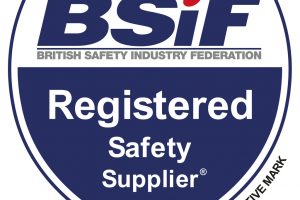A focus on fit testing
WHEN SPECIFYING Respiratory Protective Equipment (RPE) which includes Respiratory Protective Devices (RPD) it is important to consider the role of Fit2Fit and the needs of the user in addition to the performance characteristics of the RPE.
The importance of protecting workers from hazardous dust and fumes is not a new topic of debate. For some 2,000 years, the potential dangers have been recognised.
Fast forward to the present day and the issue remains a hot topic for debate and a key area of international safety legislation. So much so that 2018 has seen the introduction of the ISO 16975-3:2017 – a new standard specifically designed to provide guidance on how to conduct a fit testing of tight-fitting Respiratory Protective Devices (RPS)
Designed to evaluate the effectiveness of the seal between the wearer’s face and the respiratory interface specific requirements for conducting RPD fit testing outlined in the new standard include:
– Qualifications/competencies of fit test operators
– Specific fit testing procedures
– Interpretation of fit test results
– Record Keeping
We need to drive mindsets away from pure respirator performance to the relationship between respirator and each individual user. In the past a lot of disposable respirators were introduced to the market to purely meet the EN 149:2001+A1:2009 standard, without necessarily considering the individuality of the user, how it fitted them and how it was used.
If someone fits a particular disposable FFP3 mask – that would then apply to any FFP3 mask product – These are assumptions that are being made – WRONG! It is important to reinforce the message that if a respirator model is changed then the wearer needs to undergo a new fit test.
Where a tight-fitting face mask is required, a fit test on that mask and the person wearing it needs to be carried out. This is a legal requirement detailed in the CoSHH regulations.
Some people still don’t understand whether fit testing is a requirement for them or don’t know enough about it to make an effective judgement. Fit testing is also seen by some as time consuming, expensive or not applicable to them e.g.: ‘I only wear a mask once a week, so its OTT and not needed’.
Regardless of how often a mask is used – if its being used as an item of PPE it needs proper fit testing. Its also recommendable that regular fit testing is undertaken – ideally at least once every two years.
Recent research indicates that up to 50% of all RPE used does not offer the wearer the level of protection assumed and one of the major reasons is that it simply does not fit! Yet, under the regulations RPE must be correctly selected and this includes, for many types of RPE, a face piece Fit Test conducted by a competent person. So how can you be sure the person conducting the fit test is competent?
Despite not being qualified to do so, some people think they are competent enough to fit test. RPE fit testing should be conducted by a competent person, anyone carrying out the fit test must be appropriately trained, qualified and experienced.
In view of these major concerns the British Safety Industry Federation, along with the HSE and other industry stakeholders have developed a competency scheme for Fit Test Providers. The Fit2Fit RPE Fit Test Providers Accreditation Scheme is designed to confirm the competency of any person performing face piece fit testing.
What makes a Fit2Fit accredited tester competent? They have passed an industry recognised exam and therefore demonstrated they have a thorough knowledge of the HSE guidance on fit testing and can demonstrate they have the know how to fit test in practical circumstances.
If you or your employees require a fit test, then by using a Fit2Fit accredited tester you will be doing enough to demonstrate best practice and making sure the user of RPE is properly protected and has an effective seal on their mask.
A list of accredited, competent fit testers can be found by going to www.fit2fit.org and clicking on the ‘Find a tester’ tab. Why take the risk of using a non-accredited tester when it’s so easy to source a fit test from a competent Fit2Fit tester?
HSM publishes a weekly eNewsletter, delivering a carefully chosen selection of the latest stories straight to your inbox.
Subscribe here





